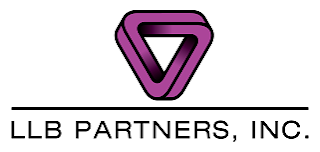How Using Level 3 Data Can Reduce Credit Card Processing Fees for Sage 100
How Using Level 3 Data Can Reduce Credit Card Processing Fees for Sage 100
In today's
competitive business environment, every dollar saved can contribute
significantly to a company's bottom line. One often overlooked area for
potential savings is credit card processing fees. For businesses using Sage
100, leveraging Level 3 data can lead to substantial reductions in these fees,
offering a straightforward way to enhance profitability.
Understanding
Credit Card Processing Fees
Credit card
processing fees are typically divided into three levels, with Level 3 offering
the most detailed information. While Level 1 and Level 2 data include basic
transaction details like merchant name, transaction amount, and tax amount,
Level 3 data provides a comprehensive breakdown, including:
- Line-item details: Each item purchased,
including description, quantity, and price.
- Tax information: Detailed tax information for
each item.
- Customer code: A code that identifies the customer.
- Shipping data: Information about shipping,
such as ship-from and ship-to postal codes.
Benefits
of Level 3 Data
Using Level 3
data in transactions can significantly reduce interchange rates, the fees that
businesses pay to credit card companies for processing transactions. Here's how
it benefits Sage 100 users:
- Lower Interchange Rates: By providing detailed
transaction data, businesses can qualify for lower interchange rates,
especially on commercial card transactions. This can lead to savings of up
to 1.5% per transaction.
- Improved Transaction Security: The detailed
data helps reduce the risk of fraud, as each transaction is documented
with granular details.
- Enhanced Customer Insights: Businesses can
gain deeper insights into purchasing patterns and customer behavior, which
can inform better decision-making and strategic planning.
- Streamlined Reporting and Reconciliation:
Detailed data simplifies the process of transaction reporting and
reconciliation, saving time and reducing errors.
Steps
to Get Started
- Consult with Your Payment Processor: Ensure
your payment processor supports Level 3 data and discuss the potential
savings and benefits.
- Enable Level 3 Data in Sage 100: To enable
check the ‘Include Level 3 Data’ under Payment Type Maintenance in
Accounts Receivable Setup. This field is available only if Credit Card is
selected in the Payment Method field and the Allow Corporate Cards check
box is selected.
- Train Your Team: Ensure your accounting and
finance teams understand how to input and manage Level 3 data in
transactions.
Conclusion
For Sage 100 users, leveraging Level 3 data is a smart,
efficient way to reduce credit card processing fees. By providing detailed
transaction information, businesses can unlock lower interchange rates, enhance
security, gain valuable customer insights, and streamline their financial
processes. It's a win-win situation that contributes directly to improving the
bottom line. Implementing Level 3 data can be straightforward with the right
guidance and tools.
For more
information and assistance, contact LLB Partners
to help you get started on optimizing your payment processing and maximizing
your savings.
|
Written
By Anthony Volpe |
|
|
Anthony has been a
member of the LLB team since 2009. He works primarily with Sage 100 and Sage
CRM. Exposure to various industries helps him analyze the existing business
practices of a company and make recommendations for improvements that will
maximize productivity of Sage products. |





Insightful perspective on bridgepayment solutions. The article clearly explains how short-term financing supports smooth transactions, faster deal closures, and improved cash flow management.Read more info about Bridge Payment merchant services
ReplyDelete